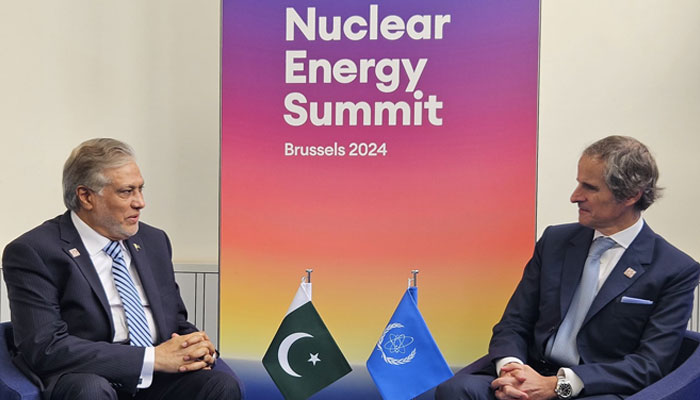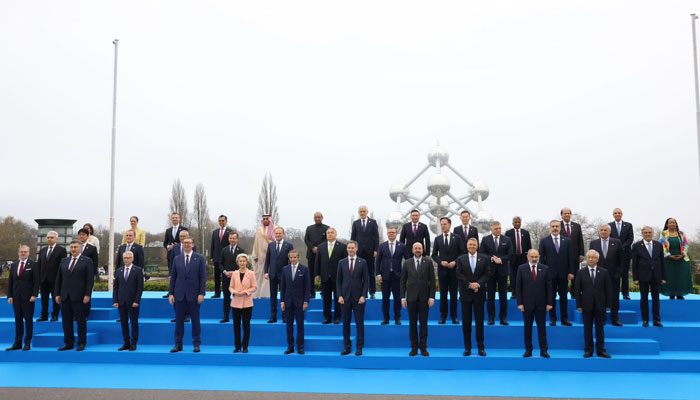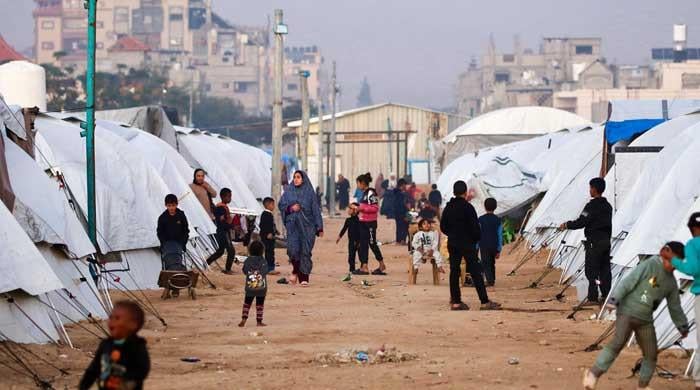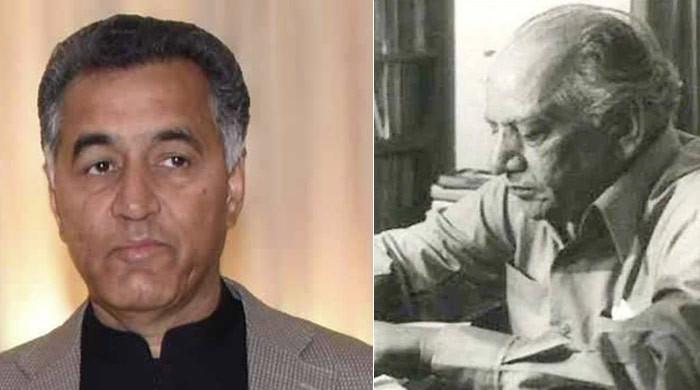Why energy security is national security?
Essence of achieving energy security goal lies in diversification of supplies and sources
March 27, 2024

In the first ever Nuclear Energy Summit in Brussels, Pakistan has sought enhanced international cooperation for its energy security.
In his address at the moot and meeting with the Director General International Atomic Energy Agency (IAEA), Foreign Minister Ishaq Dar expressed willingness to diversify country’s energy sources and its readiness to go green.
After all, the essence of achieving energy security goal lies in diversification of supplies and sources. At the same time, a country that has recently faced unprecedented climate crises must reduce vulnerability factors.
Pakistan’s primary energy demand
As a matter of fact, for a long time, the country’s primary energy demand has had a major share of "POL products, natural gas, coal, electricity and liquified petroleum gas (LPG)".
According to a governmental report, "The primary energy demand is projected to reach 66.49 Mtoe in 2025 and 76.27 Mtoe by 2030, not including fossil fuel requirements for power generation and feedstock."
While, the overall primary energy requirement of Pakistan is expected to reach "87.9 Mtoe in 2025 and 99.2 Mtoe" respectively.
This data is based on a number of factors including "expected growth, crude oil projections, population, and urbanisation" in Pakistan.
As per the same report, "The energy mix would consist of natural gas including LNG (34%), oil (28%), coal (23%), electricity (13%) and LPG (2%)."
In order to meet this target, the forecast for oil demands stands at 24 Mtoe in 2025 and 27.5 Mtoe in 2030. For natural gas, it is expected at 30.6 Mtoe next year and 33.7 Mtoe by 2030. For LPG, the projection stands at 1.60 Mtpa in 2025 and 1.96 Mtpa in 2030. The coal, 27 Mtpa and 30 Mtpa.
On the other hand, the primary energy demand for electricity is expected to be "28,300 MW and 33,600 MW" respectively.
Sources of energy
It is unfortunate that the debt-ridden country meets a significant quantity of its energy requirements through import. Out of the total primary commercial energy supply (80.62 Mtoe), the indigenous resources provide only 46.56 Mtoe and the country imports around 34.06 Mtoe energy resources.
A country that has averted default, thanks to the IMF bailout, had spent almost $17.5 billion to meet those import requirements last year.
The question is how long Pakistan can go on such a spending spree with an empty exchequer?
One way is to succumb to the demand of IMF and impose 18% General Sales Tax (GST) on petroleum products.
It is something easier said than done. There are fears that the nascent coalition government may face widespread protests if such unpopular decision is made.
The country has already witnessed highest ever inflation last year and the relentless price hike has broken the backbone of even the middle class.
Exponential hike in natural gas and electricity prices have made lives even more miserable.
With that background, the foreign minister has sought technical and financial assistance by international institutions to improve energy security of Pakistan.
Seeking clean and green energy
In his speech, Foreign Minister Ishaq Dar expressed Pakistan’s interest in "enhancing the share of nuclear energy in the energy mix." This clean energy is rather cheaper than renewable sources.
However, Pakistan can only increase this share if international monetary institutions and banks provide generous loans at the most reasonable rates.
Moreover, the highly developed economies must step up to massively subsidise these clean energy projects.
There are already circles that claim clean or green energy is basically "a weapon to inflict harm to oil and gas producing countries".

To these "propagandists", green technology is like "driving Ferrari when a person can’t afford even riding a bike".
Monopoly of companies producing green technology is cited as another evidence that "super multi-nationals are imposing their agenda through governmental policies".
Well, it may be utterly false but there is some credence to these arguments.
No doubt that, renewable energy is considered relatively less costly to run but it is very expensive to build. Hence, nations that have opted to produce significant amounts of renewable generation are forced to pay through their nose.
Germany, The Netherlands, Great Britain and the United States of America are some of the top countries that have massively gone green. According to some reports, renewable energy amounts 55% of energy share in Germany, 40% in the Netherlands, 39.6% in UK and over 20% in USA.
Citizens of Germany and the Netherlands pay the highest energy prices while the Britishers who get electricity generated by wind farms pay double for that option.
According to a Bloomberg report, "renewable generators also impose costs on the wider electricity grid". It also opens room for massive corruption.
Wind turbines have spinning issues. So, the countries opting for it must maintain traditions resources as well.
"Out of 121 wind farms in the analysis, 40 overstated their output by 10% or more on average, and 27 of those overestimated by at least 20%," reveals Bloomberg.
The report went on to disclose that, ‘In 2022 alone, those combined payments cost UK bill payers about £800 million and added more than a million tons of carbon emission into the atmosphere.’
What should Pakistan do?
Pakistan needs energy to meet industrial sector and household demand but at an affordable rate. It faces another challenge of reducing poverty and generating employment.
In a talk arranged by Harvard University, that this scribe had attended, Professor Ricardo Hausmann said, "There is no such thing as a perfect suit, there is only something like a perfectly tailored suit. A strategy for inclusive growth has to be based on where you are, where you start from, what you have, what you don’t have, what your aspirations are?"
As far as Pakistan is concerned, it is already following this principle to some extent.
In order to ensure energy security, Pakistan has shifted to LNG. This step has significantly reduced electricity generation cost. Now, it is time to improve and increase LNG infrastructure as ‘power sector takes up more than half of the imported LNG.
According to a State Bank report, "LNG-based power plants in the country are known to be highly efficient and are ranked above the oil-based plants."
LNG is cheaper than LPG. "Yet, we see only use of LPG is growing. This is because initial infrastructure cost and commitment value are significantly high in LNG. But in the long run, LNG infrastructure can keep more affordable and reliable energy to committed users," says another expert.
Also, the unit cost of energy has to include the effect of infrastructure such as power plants, and solar panel costs. Not the cost of fuel only.
For energy security, it is not advisable to put all the eggs in one basket.
At present, the renewables "share is only 4% in Pakistan’s installed power generation capacity and 2% in power generation", as per the same report.
Solar energy is another low-cost alternative and Pakistan must increase share of such affordable options in its energy mix. Surely, it will save billions of dollars in the next few years and avert looming default.
However, be it nuclear facilities, solar farms, wind turbines, hydroelectric and geothermal plants or any other source, the question is who will foot the bill for going clean or green?
For a country like Pakistan, some significant burden must be shared by those who have caused severe damage to our environment.
The author is Controller News at Geo News









